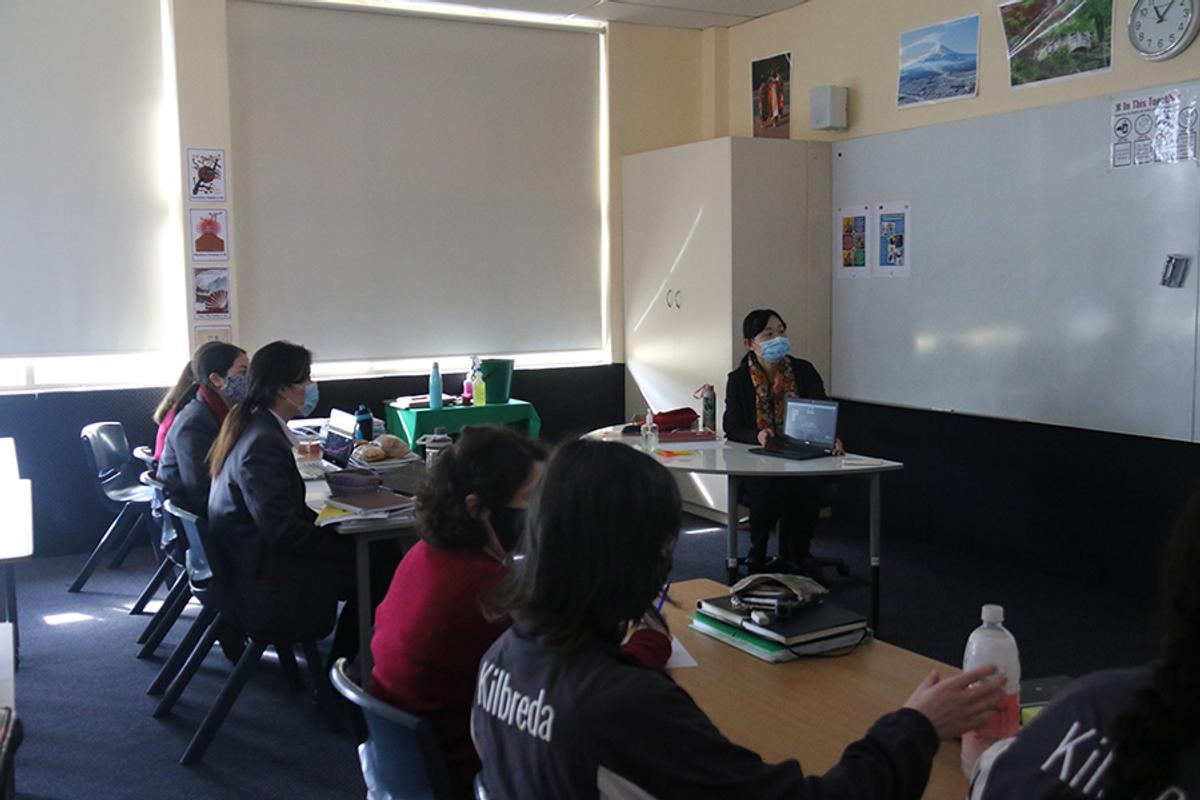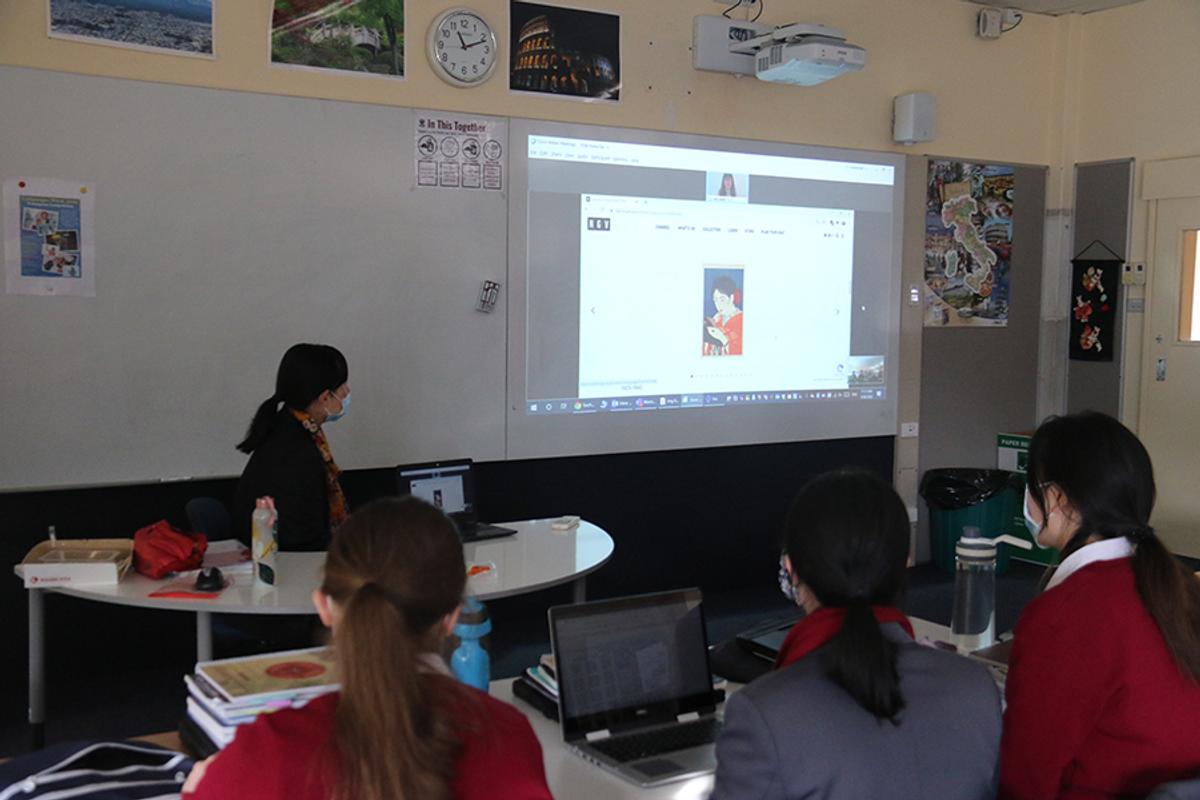Languages

Year 11 Japanese
Virtual Excursion
Although our class missed out on the annual Japanese excursion to the city, we were lucky enough to participate in a virtual excursion with the NGV during our class on 3 August.
An enthusiastic gallery educator from the NGV helped us to better appreciate Japanese culture and art. The focus of the excursion was Japanese Modernism (1923-1942), a ‘golden era’ for Japan which marked a time of significant progression, cultural change and social liberation. We learnt that the dates 1923 and 1942 were significant moments of change in Japanese history: 1923 being the date of the devastating Kanto earthquake which killed 140,000 people, and 1942 being a turbulent period of war.
Our gallery educator talked to us about the social liberation of women during this period and the rise of the ‘moga’ and 'mobo’ (modern girl and modern boy). Young women in this generation had more freedom and independence than they ever had before, and began to join the workforce and make their own decisions. The move away from traditional gender roles was reflected in women’s fashion and artwork. Japanese women began to cut their hair short, a momentous change after centuries of keeping their hair long and tucked away. We viewed a beautiful silk folding screen ‘Preparing to go out’ by Taniguchi Fumie, depicting young Japanese women; some wearing the traditional kimono and some wearing more Western dresses. The merging of both new and old captured a sense of unity as well as the transition to a more modern world.
Another interesting set of artworks from the collection was the male haori jackets. What seemed like ordinary jackets, which were black or brown on the outside, actually concealed a special pattern beneath which was unique to the individual. While men were still expected to follow traditional gender roles and appear serious in the eyes of the public, they were able to wear a jacket with a hidden pattern on the inside which reflected their interests and more modern side. Our gallery educator asked us to reflect on what kind of pattern we would have if we were to have our own haori jacket.
Overall, the virtual excursion was an eye-opening experience which allowed the Year 11 Japanese class to have a greater appreciation for Japanese culture. I think it’s fair to say that we all learnt quite a lot about Japanese modernism and will able to apply our newly learnt knowledge to our study of Japanese.
Kara Miwa-Dale
Year 11




